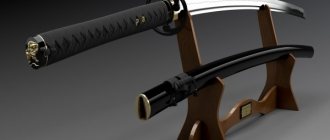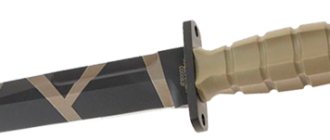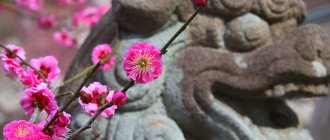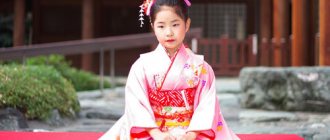Katana is the Japanese term for broadsword. Often referred to as the post-Muromachi Period uchigatana sword, which is a type of Japanese sword also commonly known as a "samurai sword", and generally defined as a standard-sized, moderately curved Japanese sword (as opposed to the older Japanese sword “tachi” (tachi), which has a greater bend) with a blade more than 60 cm long.
The katana has a characteristic appearance: a curved, thin, single-edged blade, a round or square guard, and a long handle adapted for a two-handed grip. The katana is historically associated with the samurai in feudal Japan, and is known for its sharpness and cutting abilities.
Story
The word "katana" comes from the Japanese reading of the Chinese character 刀, which is otherwise read as "too". For the Japanese, this is a broad concept meaning a one-sided knife, sword. When explaining what a Japanese katana is, I often use the term “nihontoo”, that is, “Japanese sword”. If a sword is sharpened on both sides, it is called tsurugi, ken, but sometimes these terms are used to designate one-sided weapons. This is used more often in fiction. The reason is the many centuries of influence of Chinese culture on the Japanese language and the archipelago’s inhabitants’ ideas about beauty. In China, the sword sharpened on both sides had the highest status, so the term for it in Japan was occasionally used for the katana, thereby showing respect for the object.
Since the 9th century, Japanese warriors have appreciated the advantages of a curved weapon, useful in mounted combat. At the same time, the samurai class appeared, for whom weapons turned into a symbol, an indicator of status, the physical embodiment of ideas and philosophy of life. From the 12th century, the Japanese began to develop improved armor, while simultaneously changing bladed weapons. The swords became heavier and took on a new shape. From this moment on, the katana turns into a two-handed weapon. Historians consider the period of the 12th-14th centuries to be the peak of the katana’s heyday. Since the 14th century, along with the increase in the number of military conflicts, the demand for weapons has increased, while at the same time its quality has decreased.
Traditional samurai weapons
The Japanese blade has existed in its modern form since the 15th century. It was formed in the early Muromachi era from tachi, and was widely used until the end of the 19th century as a traditional samurai weapon with a short wakizashi. You can recognize a traditional sword by its appearance - the hardening line, leather and silk handle.
What is a katana
Classic Japanese weapons are created from several types of steel, refined by folding and boiling. Samurai weapons are a bastard sword, the length of the blade is about 60 cm. The cutting part is usually curved outward. The length of the handle is not regulated. Item weight – 0.75-1 kg.
In addition to the katana, the samurai armed himself with a short wakizashi sword - almost identical to the main one, but shorter in length. There were daggers whose length was half that of the main sword. Both the long and short blades were worn in a sai sheath. This sheath set is made of wood; in the 20th century they began to make metal sheaths with a wooden lining. Their value is noticeably lower, since these are mass-produced items.
Weapons are the pride of a warrior
Katana Proficiency
A katana is a cutting weapon that can decapitate an enemy with one blow. The main technique of wielding a Japanese sword is that the blow is struck not at a right angle, but along a plane. Also, to simplify the application of cutting blows, the center of gravity was located closer to the blade.
The length of the katana allowed for various maneuvers. You need to hold it with both hands at once. The middle of the left palm was located at the end of the handle, and the second hand squeezed the area near the guard. Participation in the swing of two arms at once made it possible to obtain a greater amplitude, which strengthened the blow.
There are three types of stances for katana fencing:
- Jodan - the sword is on the top level
- Chudan - in this position the sword should be in front of you
- Gedan - the sword is on the lower level
To successfully apply the mastered fundamentals of katana fencing, you need to be able to anticipate all the enemy’s movements and accurately plan your actions in a short time.
Traditionally, Japanese sword fencing training is divided into three levels:
- Omote is an open level, it does not delve into “hidden” sword techniques
- Chudan - intermediate level
- Okuden - closed level
In Japan, many traditional schools teaching the art of swordsmanship have survived to this day. These schools were able to continue to exist even after the ban on wearing swords, which was established by Emperor Meiji.
Types of katanas and their varieties
Nowadays, there are two types of katana - combat and souvenir goods, and the bulk of those on the market belong to the second category. In the era of the heyday of edged weapons, the situation was different.
Subtypes of katana:
- tanto - an auxiliary short knife (no longer than a third of a meter);
- wakizashi - a short katana, used in conjunction with the main one and intended for use in tight spaces (blade - 30-60 cm);
- tachi - a sword with a sharp part of 75 cm, popular before the advent of the katana and used in equestrian combat (maximum blade length - 225 cm);
- ninja-to (sinobigatana) - a weapon with a shortened cutting part, thickened sheath with compartments for auxiliary tools;
- tsurugi - ancient swords with straight blades sharpened on both sides;
- gun-to - swords produced in factories in the first half of the 20th century (used in the army and sailors);
- bokken – wooden training type;
- naginata is a blade mounted on a shaft 2 m long. Although in the international classification the weapon does not belong to the swords, according to the Japanese system it belongs to this category.
Souvenir katana
The meaning of tattoos for men
Men who choose a Japanese sword for the subject of a tattoo are distinguished by their fortitude. That is why they try to walk their life’s path with dignity, struggling with their enemies, overcoming obstacles without whining and complaints. The image of a sword on the body obliges you to carefully observe the rules of knighthood, to sacrifice your peace and comfort when it is necessary for victory. Owners of katana tattoos always set new high goals if Japanese culture and the samurai code are not an empty phrase for them. The design is most often applied to the back, since this is how ancient warriors carried weapons.
It is believed that a tattoo in which the sword is naked is a symbol of constant instant readiness for battle, the ability to be vigilant and attentive, because among the Japanese there is a belief that a sword, taken out of its sheath, must definitely do its job: take just retribution and shed someone’s blood. blood. For aggressive and unrestrained guys, a tattoo with a sword stained with bloody splashes is a sign of an explosive character and unbridled temperament. Such men often behave too defiantly and immediately react to unflattering words, punishing the offenders with their fists.
Main characteristics of katanas
The real characteristics of bladed weapons common in the Japanese archipelago are noticeably different from those presented through movies and anime. This is partly due to the exoticism of the culture, the myths that surround the samurai class. Recent studies have proven that the quality of European blades was often not inferior to those made on the islands. The peculiarity of the katana is the technique of its use, that is, inflicting cutting blows on the enemy and only in rare cases, injections.
Thanks to its shape, the weapon is suitable for quickly making long cuts, and the weight is such that the blade cuts through traditional Japanese armor. It is almost impossible to cut through iron or other material of similar strength.
Katanas are shrouded in myths
Structure
The Japanese sword retains its edge for a long time, is durable and sharp, does not rust, and does not break. These qualities are explained by its structure. Sharpness and hardness are provided by martensite in the composition of steel, but this compound is the cause of brittleness and brittleness of the material. To get rid of the shortcomings, the inner layer was made of low-carbon steel, and high-carbon steel was placed on top. For the work, a U-shaped solid steel bar was used, into which soft metal was welded. Combined timber is a material for forging a workpiece.
Less commonly, a U-shaped piece of soft metal was used, into which hard steel was welded, or additional side inlays were made from a material of medium hardness.
The most famous Japanese blacksmith - Masamune
The larger the sword, the more complex its design. For short blades, one type of metal is sufficient.
Design variations:
- maru (for tanto, wakizashi) - a cheap single blade made of one type of material;
- Kobuse - a simplified design, applicable if you need to make many items of low quality;
- khonsammai - the most common, characterized by side reinforcing plates and guaranteeing the finished item high strength and resistance to breakage due to the absence of hardening of the butt;
- shihozume - a structure with an iron strip to protect the butt;
- makuri - a simplified version with a soft inner bar and a solid hard shell;
- varihatetsu - a flexible simple option;
- orikaeshi sammai – progressive honsammai;
- gomai - a sword with a hard core and a soft shell, additionally protected by hard steel;
- Soshu kitae is the most complex version of 7 layers. Shushu kitae is best known as the work style of the blacksmith Masamune.
Sword steel
The classic option for a katana is refined steel, for the production of which ferrous sand is used, purified under high heat. The result is pure iron. In the past, rectangular Tatara furnaces were used for work, producing iron with a carbon content of 0.6-1.5%. For additional cleaning, a folding technique has been developed - labor-intensive, but giving excellent results. The advantage of the technology is the absence of sulfur and phosphorus in the material, which reduce the quality of steel.
Since the 17th century, the best material for blades in the Japanese archipelago has been namban tetsu - steel imported by Europeans. The weapon contains up to 1.5% carbon and is hard. Thanks to silicon impurities, the blade is flexible and has good impact strength.
Refined steel is used for katana
Katana
Katana (刀) is a long Japanese sword. In modern Japanese, the word katana also means any sword. The word "katana" means "a curved sword with a single-edged blade." The shape of a katana resembles a saber, but its handle is not bent in the direction opposite to the blade, like a classic saber. The most significant difference between a katana and a saber lies in the technique of its use: it can be either a one-handed or two-handed grip (with a predominance of the latter), while a standard saber is held with one hand and therefore requires the use of a different fighting technique.
The katana was used primarily as a cutting weapon, sometimes as a piercing weapon, allowing both two-handed and one-handed grips. The oldest schools of katana art date back to the 15th – 16th centuries. The main idea of the Japanese sword art (kenjutsu) and the techniques based on it (such as iaido) is that the longitudinal axis of the sword during an attack should not go to the target at a right angle, but along its plane, delivering cutting blows. Therefore, it is more appropriate to talk here not about blows - in the form in which they are characteristic of Western sword techniques - but about cuts. This is why the blades have a curved shape.
Japanese swordsman Miyamoto Musashi wrote the book “Gorin no sho” (“Book of Five Rings”), in which he reveals his two-sword technique (niten-ryu) and justifies it from an esoteric perspective. Working with katana and wakizashi is similar to eskrima techniques (modern name – Arnis de mano). Kenjutsu, the practical art of fencing with a sword, has evolved into its modern form - gendai budo. The art of surprise attack and counterattack is called iaido and is a meditative type of combat fought with an imaginary opponent. Kendo is the art of fencing with a bamboo sword (shinai), in which it is mandatory to wear a set of protection, similar to European fencing and consisting of a helmet with a lattice covering the face, and armor. This type of sword fencing, depending on the specific style (ryu), can be practiced as a sports discipline. There are still numerous traditional fencing schools in Japan that managed to survive the general ban on wearing swords by Emperor Meiji. The most famous are Kashima Shinto Ryu, Kashima Shin Ryu and Katori Shinto Ryu.
Katana and wakizashi are always carried in a sheath, tucked into the belt (obi) at an angle that hides the length of the blade from the enemy. This is an accepted way of carrying in society, formed after the end of the wars of the Sengoku period at the beginning of the 17th century, when carrying weapons became more of a tradition than a military necessity. When the samurai entered the house, he took out a katana from his belt. In case of possible conflicts, he held the sword in his left hand in a state of combat readiness or, as a sign of trust, in his right. When sitting down, he placed the katana on the floor within reach, and the wakizashi was not removed (the samurai wore it in a sheath in his belt). Mounting the sword for outdoor use is called koshirae and includes the lacquered sheath of the sai. If there was no frequent need to use the sword, it was stored at home in a shirasai mount made of untreated magnolia wood, which protected the steel from corrosion. Some modern katanas are initially produced in this version, in which the scabbard is not varnished or decorated. This type of installation, which lacked tsuba and other decorative elements, did not attract attention and became widespread at the end of the 19th century after the imperial ban on wearing a sword. It seemed that the sheath was not a katana, but a bokuto - a wooden sword. In the 20th century, camouflaged swords appeared, similar in design to Western cane swords: the blade of the sword rested in a sheath imitating a staff made of bamboo or wood.
Until the early Muromachi period, the weapon was a tachi - a long sword worn on a belt with the blade down. However, starting from this time (end of the 14th century), it was increasingly replaced by the katana. It was worn in a sheath secured to the belt with a ribbon of silk or other fabric (sageo). A tanto combat knife was usually carried along with the tachi, and a wakizashi was worn together with a katana.
Tachi (太刀) is a Japanese long sword. The tachi, unlike the katana, was not tucked into the obi (fabric belt) with the blade up, but hung on the belt in a sling intended for this purpose, with the blade down. To protect against damage from armor, the scabbard was often wrapped. Samurai wore the katana as part of their civilian clothing, and the tachi as part of their military armor. Paired with tachi, tantos were more common than the wakizashi short sword related to katana. In addition, richly decorated tati were used as ceremonial weapons in the courts of shoguns (princes) and the emperor.
It is usually longer and more curved than the katana (most had a blade length of over 2.5 shaku, that is, more than 75 cm; the tsuka (hilt) was also often longer and somewhat curved).
Kodachi (小太刀) - Literally translated as "little tachi", the tachi sword is shorter than normal.
Wakizashi (脇差) is a short traditional Japanese sword. Mainly used by samurai and worn on the belt. It was worn in tandem with a katana, also tucked into the belt with the blade facing up. Blade length - from 30 to 61 cm. Total length with handle 50-80 cm. Single-sided blade, slight curvature. The wakizashi is similar in shape to a katana. The wakizashi was made with zukuri of various shapes and lengths, usually thinner than that of the katana. The degree of convexity of the wakizashi blade's cross-section is much less, so compared to the katana, this sword cuts soft objects more sharply. The handle of a wakizashi is usually square.
In a pair of daisho (the two main samurai swords: long and short), the wakizashi was used as a short sword (shoto).
Samurai used the wakizashi as a weapon when the katana was unavailable or unusable. In the early periods of Japanese history, the small tanto sword was worn instead of the wakizashi. And also when a samurai put on armor, instead of a katana and wakizashi, tachi and tanto were usually used. Upon entering the room, the warrior left the katana with the servant or on the katanakake. The wakizashi was always carried with him and was removed only if the samurai remained for a long period of time. The Bushi often called this sword "the guardian of their honor." Some fencing schools taught the use of both katana and wakizashi at the same time.
Unlike the katana, which could only be worn by samurai, wakizashi was allowed to merchants and artisans. They used this sword as a full-fledged weapon, because according to their status they did not have the right to carry a katana. Also used for seppuku and hara-kiri rituals.
Tanto (短刀 lit. "short sword") is a samurai dagger.
“Tan to” sounds like a phrase to the Japanese, so they don’t perceive tanto as a knife (knife in Japanese is hamono (刃物).
According to modern rules in Japan, the tanto is recognized as a national cultural treasure - one of the variants of the nippon-to or Japanese sword. Only licensed craftsmen can make tanto, of which about 300 people are currently actively working in Japan (in total, about 600 licenses were issued after World War II).
According to the rules of tanto, a Japanese sword must be made of tamahagane and have a characteristic hamon, a removable hilt attached to the tang with bamboo sticks and a removable round tsuba guard; in this case, the tanto must be less than 30.3 cm long (otherwise it will no longer be a tanto, but a short wakizashi sword). Each tanto (as a national treasure) must be licensed, including the found historical tanto. At the same time, mass-produced tantos from World War II from serial steel are not subject to licensing and are destroyed, since they have no cultural value, since they have nothing to do with the national tradition, but are a legacy of the militaristic past.
The tanto was used only as a weapon and never as a knife; for this purpose there was a kozuka, worn in tandem with the tanto in the same sheath.
Tanto has a single-edged, sometimes double-edged blade ranging from 15 to 30.3 cm in length (that is, less than one shaku).
It is believed that tanto, wakizashi and katana are, in fact, “the same sword of different sizes.” The first tantos appeared in the Heian era and were devoid of any signs of artistry. In the early Kamakura era, high-quality, skillfully executed examples began to appear, created, for example, by the famous Yoshimitsu (the most famous master who made tanto). Tanto production, which had reached significant levels during the Muromachi era, fell sharply during the Shinto ("new swords") period, and tanto from this period are quite rare. During the Shin-Shinto (“new new swords”) period, they were again in demand and production increased, but their quality was low.
Tantos are usually forged in the hira-zukuri style, that is, flat, without a stiffening rib, although there are also specimens with a stiffening rib (moroha-zukuri, double-edged). Some tantos, which had a thick triangular blade, were called yoroidoshi and were designed to pierce armor in close combat. Tanto was used mostly by samurai, but it was also worn by doctors and merchants as a weapon of self-defense - in fact, it is a dagger. Women of high society sometimes also wore small tantos, called kaiken, in the sash of their kimono (obi) for self-defense. In addition, tanto is used in the wedding ceremony of royal persons to this day.
Sometimes the tanto was worn as a shoto instead of a wakizashi in a daisho.
A dummy tanto with a wooden, plastic, and sometimes blunt metal blade is used for training in martial arts:
— Aikido
— Judo
— Karate
Odachi (大太刀, "big sword") is a type of Japanese long sword. The term nodachi (野太刀, "field sword") refers to another type of sword, often mistakenly used instead of odachi.
To be called an odachi, a sword must have a blade length of at least 3 shaku (90.9 cm), however, as with many other Japanese sword terms, there is no exact definition of the length of an odachi. Usually odachi are swords with blades 1.6 - 1.8 meters.
The purpose of odachi can be divided into the following types:
- An offering to the temple. Some odachi were linked by worshipers with victory in war, others were placed in treasuries as legendary swords.
- Weapon. Research into old texts shows that the odachi was used in battle as a weapon for foot soldiers.
— Symbol of the army. Some odachi were too long to be used. There is, however, evidence that they were used as a symbol of the army, like a banner or a spear. (This assumption requires additional research)
- Ceremonial appointment.
— Demonstration of blacksmith skills.
Most of the odachi was used in the first two cases.
Odachi, which were used as weapons, were too large for samurai to carry like regular swords. There were two ways to wear it.
1) Behind your back. This was impractical because it was impossible to draw the sword quickly enough.
2) Another method was simpler - carrying a sword in your hand. In the Muromachi era, it was customary for the samurai to be followed by a squire who would help draw the odachi from its sheath at the right moment.
Odachi fencing styles placed greater emphasis on downward cutting strikes and a firm grip on the weapon.
Odachi fell completely out of use as a weapon after the Osaka-Natsuno-Jin War of 1615 (a battle between Tokugawa Ieyasu and Toyotomi Hideyori - the son of Toyotomi Hideyoshi).
Naginata (なぎなた, 長刀 or 薙刀, “long sword”) is a Japanese bladed weapon with a long oval-shaped handle (namely a handle, not a shaft, as it might seem at first glance) and a curved one-sided blade. The handle is about 2 meters long and the blade is about 30 cm. Over the course of history, a shortened (1.2-1.5 m) and lighter version has become much more common, used in training and showing greater combat effectiveness. It is an analogue of a glaive (although it is often mistakenly called a halberd), but much lighter. The first information about the use of naginata dates back to the end of the 7th century. There were 425 schools in Japan where they studied naginatajutsu fighting techniques. It was the favorite weapon of the Sohei, warrior monks.
In peacetime, the naginata was used by women of the samurai class to protect their homes.
Bokken (in Russian, often pronounced boken) (木剣) is a wooden dummy sword used in various Japanese martial arts, including aikido, for training.
Bokkens are made from oak, beech, hornbeam and other dense woods. They are often impregnated with varnish, stain or wood resin for greater density and weight.
The bokken must be strong enough to withstand strong blows to anything, as well as deflecting an attack from another bokken or jo.
A well-placed blow to a person with a bokken can lead to death. The great Japanese swordsman Miyamoto Musashi (1584–1645) often used bokken in actual fights, killing his opponents in most cases. The tip of the blade is most dangerous when delivering slashing blows.
In Japan, bokken are treated with great respect, almost like real weapons. For example, when transporting a bokken on an airplane, the passenger is required to check it in as baggage. And wearing it without a special case is considered by the Japanese themselves to be equivalent to carrying a bladed weapon.
Another name is bokuto (木刀, “wooden sword”).
Varieties:
- “male” (男子木剣), distinguished by a relatively thick handle and “blade”, straightness and a thick wooden guard (tsuba).
- “female” (女子木剣), the most commonly used option. It is distinguished by its curvature and lightness. Often used with a plastic guard and sheath (for example, in Iaido).
- “training” (素振木剣) or suburito, characterized by thickening on the tip side, thus imitating the balancing of a real sword.
Also, different schools use different types of bokken for training:
In Katori Shinto Ryu, it is customary to use a bokken with less bending, sometimes without it at all. Thicker and heavier.
The bokken used in Iwama Ryu (as well as the bokken used in other aikido styles), unlike the previous one, has a more graceful shape and a more pronounced bend.
The bokken in Kashima Shin Ryu (as well as in most kendo schools), unlike the previous two, has the closest resemblance in shape, balance and feel to a real katana.
Iaito (居合刀) is a Japanese training sword for iaido. Most iaito are made from an alloy of aluminum and zinc, which is often cheaper and lighter than steel and complies with Japanese restrictions on bladed weapons, and these swords are not subject to restrictions on the transport of bladed weapons. Iaito are made as exercise weapons and are not suitable for contact use. Matching the length and weight of the iaito in relation to the student's height and strength is essential to performing the exercises safely and correctly.
When making iaito, real swords of famous sword masters are often taken as a model, such as the sword of Miyamoto Musashi.
Another name is mogito (模擬刀, “imitation sword”). It is necessary to distinguish between mogito, made for iaido, and mogito, souvenir crafts. Souvenir swords are generally unbalanced and their parts are poorly secured. Using the latter type of mogito for training can lead to injury.
Information from the site: https://neehon.ucoz.ru/publ/samurai/japonskie_mechi/2-1-0-20
Making a Japanese sword
Making a sword is a multi-step process, sometimes taking months. Pieces of the original metal are folded, filled with diluted clay, covered with ash to remove slag, then heated, fused. The finished block is flattened and folded several times - sometimes the number of words reaches 1,048,576. Such a long process makes it possible to achieve uniform distribution of carbon - hardness depends on this.
The next stage is the inclusion of mild steel, which prevents breakage under dynamic loads. Gradually, the workpiece is stretched in length, a structure is formed, combining different types of metal, and the shape is set. The duration of forging is several days. Finally, liquid clay is applied to the metal to prevent oxidation.
Hardening is the stage of formation of the hamon, a unique pattern characteristic of a particular blade. Later it will appear more clearly during polishing. Hamon is formed at the junction of two steels. You can judge the skill of a blacksmith by its appearance. During hardening, the sword is heated and cooled, stimulating the formation of martensite.
The final stage is the design of the blade. The polisher uses up to 9 types of stones to make surfaces flat and angles sharp. Sometimes the unhardened parts are decorated with engraving.
Creating a katana is a long process
Notes
- Literally “blade” - hence the use of the Chinese character “dao” with the same meaning. The word itself was borrowed from Korea along with weapons.
- GOST R 51215-98. The weapon is cold. Terms and Definitions. B.Z. Sabers. B.3.5. katana (give): Japanese large two-handed saber with a blade over 60 cm long.
- The famous hakama pants were necessary clothing for riding through the bushes of the spring bushes.
- Evidence of this is the official genealogies of the old Japanese aristocracy, their burial mounds with Korean paintings, grave goods and burial practices, Koreanisms in Japanese military and state terminology, and much more.
- The handle was made of wood and wrapped with fabric tape; it was a consumable item and did not last long. It did not break immediately, because at the junction of the blade with it there was a coupling, usually made of soft bronze or brass, and upon impact, almost all the energy was extinguished without being transferred to the handle.
| [ + ] Katana. And cold weapons warm the soul. | |||||||||||||||||||||||
| |||||||||||||||||||||||
| [ + ] Katana is related to the land of the rising sun, desu! | |||||||||||||||
| |||||||||||||||
How to hold and wear
The long handle makes the sword easy to maneuver. Classic grip: with your right hand, squeeze the handle at the guard, with your left hand, so that the end of the handle falls in the middle of the palm. When the movements are synchronized, the amplitude of the swing increases, and the movement does not require much force.
When using Japanese one-sided weapons, vertical blows are predominantly delivered, including to the sword and the enemy’s hands, thereby clearing the trajectory for a further attack.
The weapon is worn on the left side with a sai tucked into the belt. When visiting a house, a long sword is taken out and left at the doorstep. If a warrior shows distrust of his interlocutor, he holds the blade with his left hand; a symbol of peaceful intentions is a right-hand grip.
There was an etiquette for wearing a katana
Carrying a katana
The samurai katana sword is worn on the left side in a sheath, which is located behind a special belt - obi. The blade of the sword, as a rule, is directed upward - this method of wearing is considered generally accepted since the end of the wars during the Sengoku period, when the carrying of weapons took on a traditional character rather than a military one. When the possibility of a threat arose, the katana was held in the left hand, and if they wanted to express their trust, then in the right. When sitting down, the samurai placed the sword not far from him. If the katana was rarely used, it was kept at home in a sheath made of untreated magnolia wood, which prevented the appearance and further spread of corrosion.
The corner in which the sword was kept was called tokonoma. And the special stand on which it was located was a katanakake. While sleeping, the samurai placed his sword at the head of his head in such a way that it could easily be grabbed at any time.
Reasons for popularity
In the past, the relevance of the two-handed sword was explained by its convenience, practicality, and durability. Over time, the blade became part of the philosophy of warriors, a symbol of the soul of its owner.
In modern times, weapons are popular among the masses thanks to myths spread through the media and movies - it is believed that the blade cuts through any material, even the most durable. In addition, many are sure that the katana cannot be broken.
Collectors value combat blades made in the past as original, beautiful products with an interesting history.
Japanese weapons are prized by collectors
Samurai katana sword in modern times
Having long ago lost its military significance, the katana sword has become a real find for lovers of Asian culture. A real weapon is an ancient handmade creation. Genuine specimens are most often passed on by inheritance and serve as heirlooms. But not everyone has the opportunity to purchase the best katanas, since only a true connoisseur of edged weapons can distinguish a fake from an original. So how much does a real samurai katana sword cost? The cost of swords made in Japan is at least 1 thousand dollars, and the price of rarer specimens can reach up to 9 thousand dollars. Thus, the most expensive Japanese sword in history is considered to be the 13th century Kamakura sword, which was sold at auction for 418 thousand dollars.
Interesting Facts
Curious to know:
- the purpose of the sword’s existence is to protect the master, the samurai’s relatives;
- the scenes of cutting a silk scarf shown in popular films are true - the blade actually cuts the thin fabric on the fly;
- now the katana is a work of art, not a weapon;
- the traditional clothing of a blacksmith in Japan is a white dogi outfit, symbolizing the purity of the thoughts of the forger;
- To create one sword, several blacksmiths are sometimes involved;
- learning forging requires at least 7 years, of which the first three years students perform auxiliary work and do not touch the tools.
Katana - a reflection of the samurai's soul
How much does a katana cost?
Japanese products are expensive things. A well-made copy will cost tens or hundreds of thousands of American dollars. Cheap models are souvenir items made in Chinese factories. The most expensive sword in the history of the market - made in the 13th century and bought by an anonymous European collector for $418,000.
Common defects
Typical defects caused by forging and the nuances of the material used:
- sinae - minor imperfections due to metal fatigue at bending points;
- karasunokuchi – cracks (critical if they divide the hardened and unhardened parts);
- umegane - patches that hide internal steel or a defect;
- hagire – small cracks (almost invisible hagire are considered dangerous);
- mizukage - darkening on the cutting part;
- hajimi – matte zones;
- fukure - coal, scale due to poor quality welding;
- tsukare – a violation of proportions (reduction in thickness) due to frequent sharpening.
Katana sheath
Sayas are used to store a katana. In the past, they were made from magnolia, decorated with varnish to protect them from moisture, and decorated with lacquer miniatures, leather, and gold. In the 20th century, sai was made from metal in factories.
Some sayas are works of art
Longest Katana
The longest subtype of katana is the odachi. Its total length reaches 180 cm, the blade ranges from 120-150 cm. Odachi is designed to be carried in the hand.
The predecessor of the tachi katana reaches 2.25 m in length.
Using a Katana
The unique design of the katana, in particular its sharpness, requires a lot of precautions when handling it. Failure to observe these precautions may result in damage to the katana or injury to yourself.
Katana fencing techniques
There are several techniques for using a katana:
- Battojutsu - the art of drawing the sword
- Iaido is the art of surprise attack or counterattack
- Iaijutsu - the art of fencing with a sword at arm's length
- Kenjutsu is the art of swordsmanship. This technique appeared around the 9th century when the warrior class emerged in Japan.
- Shinkendo is the art of swordsmanship. This technique was created in 1990 in the USA by Toshishiro Obata.
A detailed discussion of these schools is beyond the scope of this article.
Storage and maintenance of katana
If a katana is not stored properly or maintained properly, it may become permanently damaged. The blade should be stored in a sheath, curved down (blade up) for blade maintenance. It is extremely important that the blade is well oiled, powdered and polished, since the natural moisture of the hands can cause the blade to rust if it is not cleaned in time. Traditionally, choji oil is used (99% mineral oil and 1% clove oil for flavor). Likewise, when storing for a long time, it is necessary that the katana is regularly inspected and, if necessary, stored in an airless environment to prevent the blade from rusting or molding (mold may appear on the blade due to the presence of salt residues from the oil used in polishing the katana). .







